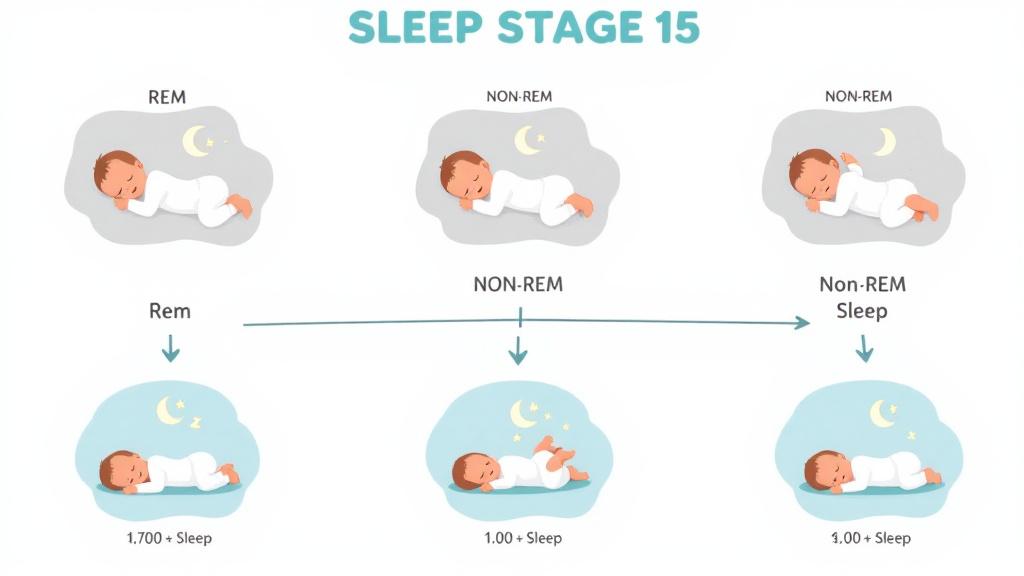Top Newborn Sleep Training Tips and Techniques for Exhausted Parents - You Must Try!
Welcoming a newborn into your family brings immense joy and challenges—including navigating the realm of sleep. For many new parents, sleep deprivation is a rite of passage, but it doesn't have to be. With consistent sleep training and understanding, you can help your newborn develop healthy sleep habits.
Understanding Newborn Sleep Patterns
Newborns experience sleep differently than older babies and adults. They sleep approximately 14-17 hours a day in short stretches, usually 2-4 hours at a time, due to the need for frequent feedings. Here's a closer look at why they sleep this way:
-
Short Sleep Cycles: Newborns alternate between light REM (rapid eye movement) sleep and deep non-REM sleep. REM sleep is crucial for brain development and comprises about 50% of their sleep cycle, leading to more frequent awakenings.
-
Feeding Needs: Their small stomachs require regular refueling, waking them often for feedings.
Understanding these patterns can help set realistic expectations and alleviate frustration when your baby isn’t sleeping through the night.
The Role of Circadian Rhythms
Your newborn's circadian rhythm—the natural sleep-wake cycle—is still developing. While they don't have a fully functional internal clock, exposures to light and dark help set this biological rhythm. Encouraging this development can aid in better sleep patterns in the coming months.
Establishing a Soothing Bedtime Routine
 Creating a nightly routine provides a sense of security and signals to your baby that it's time to wind down. Here’s how you can build an effective routine:
Creating a nightly routine provides a sense of security and signals to your baby that it's time to wind down. Here’s how you can build an effective routine:
-
Consistent Timing: Try to start the bedtime routine at the same time every night to reinforce the sleep-wake cycle.
-
Relaxing Activities: Engage in calming actions such as:
- A Warm Bath: This not only helps soothe but also lowers body temperature post-bath, promoting sleepiness.
- Gentle Massage: A light massage can calm your baby and strengthen the parent-child bond.
- Story Time or Singing: Softly reading or singing quietly can transition your baby into a mellow mood.
-
Dim Lighting: Dimming lights as you start the routine can reinforce the difference between day and night.
Effective Sleep Training Techniques
Adopting sleep training techniques can empower your little one to fall asleep independently and sleep longer.
1. The Swaddle Method
Swaddling imitates the snugness of the womb and curbs the startle reflex. Here's how to swaddle safely:
- Materials: Use a light, breathable blanket to prevent overheating.
- Technique: Ensure the swaddle is snug around the arms but loose around the hips to support healthy development.
2. Gradual Extinction Method
This gentler version of the "cry it out" method involves allowing your baby to fuss for short, gradually increasing periods before offering comfort. This helps them learn to self-soothe.
3. The Pick-Up, Put-Down Method
This involves picking up your baby when they start fussing and putting them down once they calm. This teaches self-soothing over time without leaving them to cry alone.
4. Chair Method
Sit beside your baby’s crib until they fall asleep, gradually moving the chair farther away each night. This provides reassurance while encouraging independence.
Addressing Common Sleep Challenges
Several challenges may arise during sleep training, but perseverance is vital. Here are solutions to common issues:
Dealing with Night Wakings
To address frequent night wakings:
- Keep Lights Dim: During night feeds or diaper changes, maintain low lighting to avoid stimulating wakefulness.
- Limit Interaction: Keep interactions calm and quiet to teach your newborn that night is for sleeping.
Managing Day-Night Confusion
Expose your baby to bright natural light during the day and maintain a quiet, dim environment at night to help align their internal clock.
Tips for Parental Patience and Persistence
Every baby's sleep journey is unique, requiring patience and adaptability. Here are some tips to stay motivated:
- Document Progress: Keep a sleep diary to identify patterns and progress.
- Self-Care: Ensure you’re also resting. Accept help from family or friends when needed.
When to Seek Professional Guidance
If your efforts aren’t improving sleep patterns, or if sleep issues disrupt your family’s health and well-being, consult your pediatrician or a sleep specialist for personalized advice.
Conclusion
 By integrating these strategies into your nightly routine, you can look forward to more consistent and restful nights. Remember, each step towards better sleep is a step towards happier and healthier days for both you and your newborn. Sweet dreams!
By integrating these strategies into your nightly routine, you can look forward to more consistent and restful nights. Remember, each step towards better sleep is a step towards happier and healthier days for both you and your newborn. Sweet dreams!
We wish you joyful, restful nights and flourishing days as you embark on this sleep journey with your little one.


